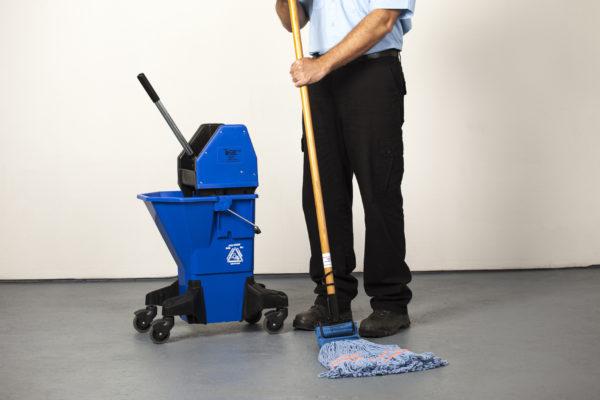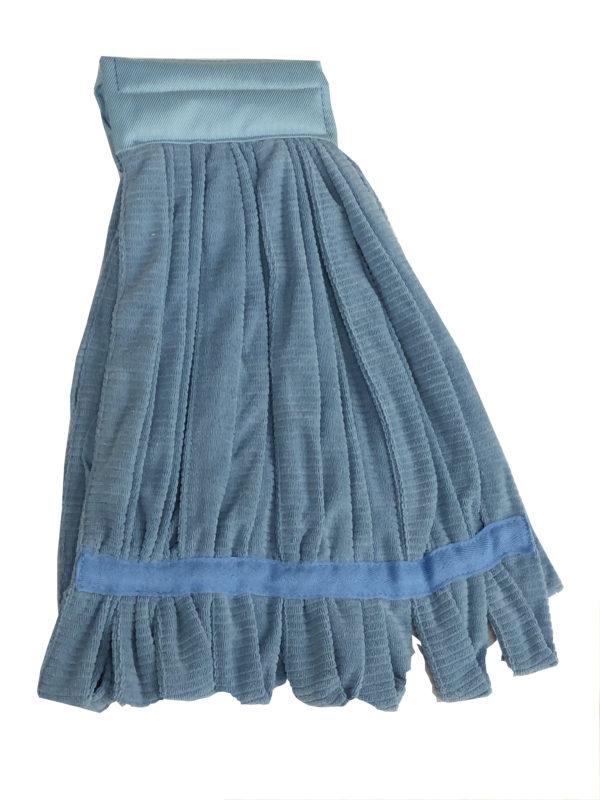How to Properly Clean Commercial Tile Floors

Durable and aesthetic, ceramic tile is often used for commercial flooring. The quality of a tile floor does not have an expiration date, especially with proper care. It is generally low maintenance compared to other types of flooring. However, without regular care, the surface will become dull and break down while conditions may become unsanitary. Below, we’ll look at the best way to clean commercial tile floors to help get the most out of them.
How Often Should Tile Floors Be Cleaned?
Cleaning, including sweeping, vacuuming, and mopping, should be done about twice a week in general (or perhaps every week or two in a low-use area). You should clean more often if the floor is heavily traveled and in an area that’s more prone to dirt. Kitchen floor tile should be cleaned every two weeks and bathroom tile once a week. Well-maintained grout can be spot-cleaned every two or three months or as needed.
What You’ll Need
Tile floor cleaning requires just a few supplies. Aside from some warm water, the items you’ll need include:
- Dish soap or an all-purpose cleaner
- Broom and dustpan (a vacuum cleaner will also do)
- Rag or chamois mop
- Large water bucket
- Dry towel or cloth
Why Is It Important to Clean Tile Floors Properly?
Proper cleaning of tile floor is important because:
- Dirt, debris, bacteria, mold, and mildew can build up in grout between tiles.
- Unclean floors put people at risk of allergy symptoms, infections, and disease.
- A clean floor can help in selling your property.
- Contaminants can break down grout, shortening the life of your floor.
- A clean floor can look brand new, no matter its age.
How to Clean Commercial Ceramic Tile Floors

One of the unique advantages of tile is it doesn’t scratch easily or readily lose its shine. To help it last longer, follow these steps to cleaning ceramic tile floors:
- Sweep/Vacuum: Whether you sweep the floor manually or use a vacuum cleaner, cover every square inch of floor, including corners that are more prone to dirt buildup.
- Mix Cleaner and Warm Water: For general mopping, mix hot water with a mild detergent. To deep clean tile floors, use a ¼ cup of low-sudsing detergent or 1-2 tablespoons of commercial floor cleaning powder (or washing soda or trisodium phosphate) per gallon of water.
- Mop So You Cover the Entire Floor: Use even, gentle strokes and follow the same pattern for the entire room; it’s important not to miss any spots, or the remaining dirt will get tracked around.
- Change Bucket Water Frequently: In larger spaces, you’ll need to rinse out the mop or rag regularly. The water will eventually get cloudier and dirtier. Refill the bucket to avoid leaving behind a grimy film. If a film appears, soak a rag in hot water and white vinegar (or a non-abrasive all-purpose cleaner) and wipe it away.
- Don’t Miss the Grout: Spray on a grout cleaner, wait a few minutes, and rinse it off. A mild bleach solution can be used as well (safely with gloves). Wait up to 10 minutes with deep stains, and then scrub the grout with a small, soft brush; afterward, mop the floor and rinse thoroughly before drying.
- Dry the Floor Thoroughly: Use a clean cloth to get the floor dry and prevent water spots from forming on the tile.
- Use Wet Floor Signs for Safety: Wet, slippery floors are a common cause of slip and fall accidents. Warning signs alert people in your facility of potential danger.
Order Cleaning Products from Prudential Overall Supply
We carry a full range of floor cleaning supplies and chemicals. Feel free to request a quote on products such as wet mops/handles, an ergonomic premium mop bucket, microfiber wet mop, and other commercial mopping supplies today. If you have any questions, call us directly at 800-767-5536.